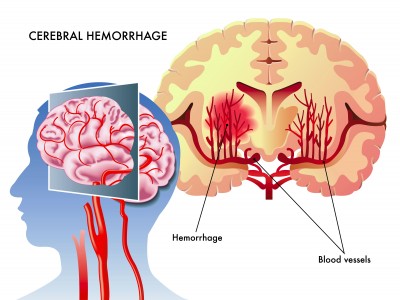- Brain Basics
- What is an Aneurysm?
- What is an AVM?
- What is a Hemorrhagic Stroke?
- Types of Cerebral Aneurysms
- Factors of a Brain Aneurysm
- Symptoms of a Brain Aneurysm
- Dangers of a Brain Aneurysm
- How Does a Brain Aneurysm Develop?
- What Happens When an Aneurysm Bleeds?
- How is a Brain Aneurysm Diagnosed?
Dangers of a Brain Aneurysm
Animation of a Ruptured Brain Aneurysm
Aneurysms may burst and bleed into the brain, causing serious complications including hemorrhagic stroke, permanent nerve damage or death. Once it has burst, the aneurysm may burst again and rebleed into the brain, and additional aneurysms can also occur.

Another delayed post-rupture complication is vasospasm, in which other blood vessels in the brain contract and limit blood flow to vital areas of the brain. This reduced blood flow can cause stroke or tissue damage.
Once blood enters the brain and the surrounding space, there is direct damage to the brain tissue and functions. The amount of damage is proportional to the amount of blood leaked. This damage is caused by increased pressure and swelling from bleeding directly into the brain tissue, or from local cellular damage to brain tissue from the irritation of blood in the space between the brain and the skull.
Once an aneurysm bleeds, there is a 30-40% chance of death, and a 20-25% chance of moderate to severe brain damage, even if the aneurysm is treated.
Common Questions
Upcoming Events
News Room
Connect with Us
- Subscribe to our Knuckle-Up Newsletter
- Become a Fan on Facebook
- Follow us on Twitter
- Follow us on Instagram
- Join our Online Aneurysm/AVM Support Group
- Join our Online Parents Support Group
- Join our Online Young Adult Survivor’s Support Group
- Join our Online Aneurysm/AVM Caregivers Support Group
- Join our Online Honoring the Taken Support Group
- Support Group Locations
